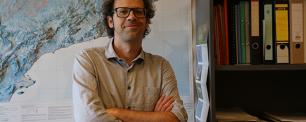Big Mosquito Bytes: new project proposes citizen science and big data as solution against epidemics caused by mosquitoes
The Big Mosquito Bytes project has been awarded a million euros by the “la Caixa” Banking Foundation. The project will combine citizen science and other massive data sources to develop innovative models that allow predicting the risk of epidemics, as well as visualizing this risk in real time. In the project led by CEAB-CSIC, scientists from UPF, the Max Planck Institute for Demography, the National Center for Epidemiology of ISPCIII and CREAF participate, and it draws heavily on the Mosquito Alert citizen science platform.

The “la Caixa” Banking Foundation has awarded the Big Mosquito Bytes project with one million euros to prevent epidemiological outbreaks of mosquito-borne diseases. The project, led by Frederic Bartumeus, ICREA researcher at CEAB and CREAF, proposes to use citizen science and big data to predict in real time if an epidemic of Dengue, Chikungunya or Zika can be triggered from a few isolated cases. "We propose to revolutionize epidemiology by creating a mathematical model that will use real-time data intelligence," says Bartumeus. This model will receive the updated data with the imported Dengue, Zika or Chikingunya cases detected in Spain, it will also receive environmental and climate data, socio-economic and human mobility data. Will also receive data of the presence or absence of tiger mosquito from the Mosquito Alert citizen science application. With all these data, the model will be able to anticipate the focus of infection and the risk of an epidemic being triggered in real time. This will be key to make monthly projections and make a more directed and effective entomological and health management. According to Bartumeus, "this improvement in management is the best vaccine to protect the population."
Right now, many of this data is not yet available. For example, the project will use new technologies and social networks to study where and how people move. People move differently throughout the week and throughout the year (between summer and winter, for example), so knowing these patterns can help to know and predict whether a disease will be more or less easily to spread and anticipate the extent of an epidemic. Similarly, precipitation and temperature determine the amount of mosquitoes throughout the year. Therefore, Big Mosquito Bytes will use the Mosquito Alert app to find out the number of bites people are receiving at a given time. The Mosquito Alert mobile application is part of a pioneering system of citizen science in Spain that allows anyone to warn of the presence of mosquitoes in a place by uploading a photo. Now, thanks to Big Mosquito Bytes this application will also have the possibility to collect the number of bites received daily, an option so far not available.
Big Mosquito Bytes proposes to use citizen science and big data to predict in real time mosquito borne-disease epidemics.
The collaboration between the citizens and the Public Health institutions will allow a greater flow of information and make that one accessible to the population. "Real-time maps will allow better management and better knowledge of the risk of outbreaks of diseases transmitted by the tiger mosquito," says Diana Gómez-Barroso, an epidemiologist at the National Center for Epidemiology (CNE) CIBERSP / ISPCIII. “Big Mosquito Bytes will work mainly on the risks of the tiger mosquito (Aedes albopictus), which is currently the only mosquito that can transmit dengue, Zika and chikungunya, on the Iberian peninsula, but Mosquit Alert is prepared for the detection of the yellow fever mosquito (Aedes aegypti). An even more fearsome transmitter for dengue”, said Roger Eritja, expert entomologist of CREAF.
“This is a situation where an important societal challenge can be addressed only with an interdisciplinary team that includes ecologists, demographers, epidemiologists and computer scientists”, said Emilio Zagheni from Max Planck Institute of Demography (MDPIR). For that reason the team led by Frederic Bartumeus will consist of experts from different disciplines: the sociodemographer John Palmer from Pompeu Fabra University (UPF), the demographer Emilio Zagheni from Max Planck Institute for Demography (MPDIR), the epidemiologist Diana Gómez-Barroso from the National Center for Epidemiology (CNE) CIBERESP / ISCIII and the entomologist Roger Eritja from CREAF. Some of them are part of the Mosquito Alert citizen science platform, one of the pillars of the project.
Does your social condition make you more vulnerable to get dengue?
One of the purposes of Big Mosquito Bytes is to examine whether social, economic or gender inequality influences the abundance of mosquitoes, and therefore the risk of suffering from mosquito-borne diseases. In this sense, the project will analyze if the urban planning of the cities and the habits of the people in each neighborhood are conditioning the more or less presence of mosquitoes, and therefore more possibilities of being bitten and of falling ill.
Autor: Àlex Richter-Boix






